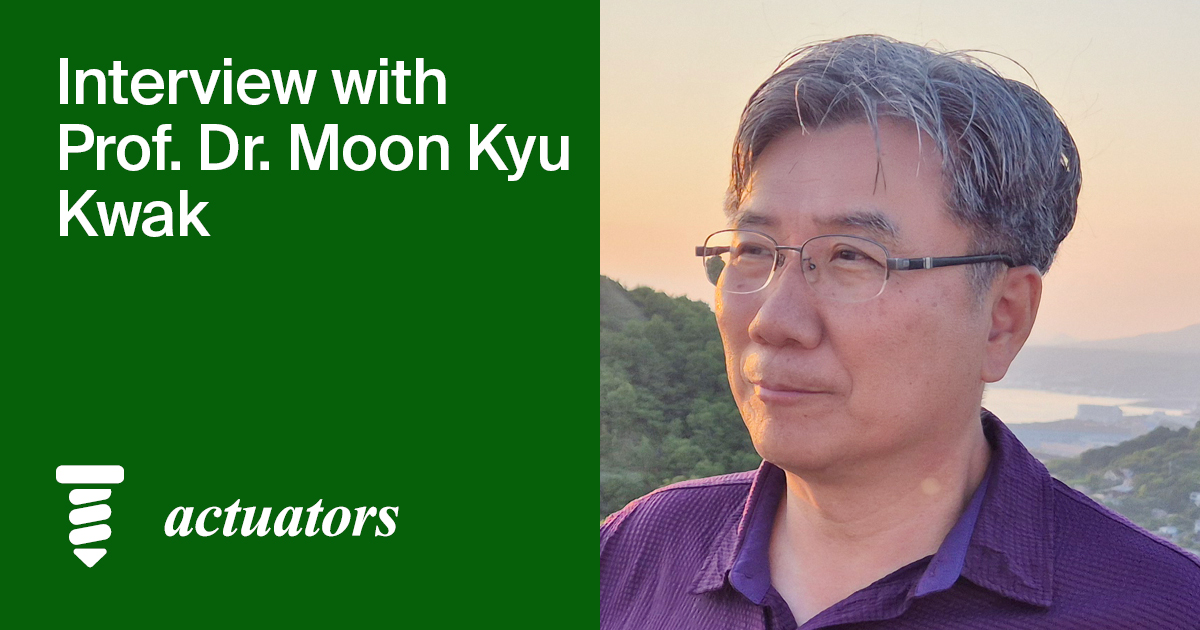
Actuators | An Interview with One of the Authors—Prof. Dr. Moon Kyu Kwak
Prof. Dr. Moon Kyu Kwak is one of the authors of the following notable paper published in our journal Actuators (ISSN: 2076-0825):
“Slewing and Active Vibration Control of a Flexible Single-Link Manipulator”
by Dae W. Kim, Moon K. Kwak, Soo-Min Kim and Brian F. Feeny
Actuators 2025, 14(2), 43; https://www.mdpi.com/2076-0825/14/2/43
Available online at https://www.mdpi.com/2076-0825/14/2/43
The following is a brief interview with Prof. Dr. Kwak, in which he shares his insights on the article:
1. Can you briefly introduce your latest research published in Actuators?My latest research, published in Actuators, “Slewing and Active Vibration Control of a Flexible Single-Link Manipulator”, is closely related to the control of robotic arms and can be considered one of the main problems of reorientation of lightweight structures. This topic has attracted the attention of many researchers and has long been studied theoretically. However, compared to the extensive theoretical research, experimental studies on this topic have been quite limited. In this study, we succeeded in resolving the gap between theory and practice. The video of the experimental results has been uploaded to YouTube, and the link is as follows: https://youtu.be/U4tN9lfhO0E?si=eKXr3mYsAqL_OMzb.
2. What inspired you to focus on this topic?The research topic is a subject I have been contemplating for over 30 years. I, too, was interested in this problem and tried to predict experimental results using a numerical model, but I failed. Only recently have we been able to identify the error in the theoretical model and overcome the gap between theoretical and experimental results. The main reason was the low level of understanding among theoretical researchers regarding the operating principles of the motors (actuators) that drive the manipulators.
3. What are the most exciting findings or innovations in your study? How do you see your research impacting the field of actuator technology?We are pleased to report that the actuator that moves the manipulator cannot be considered the simple model assumed in theoretical research. We expect that this study will provide the right research direction for those studying dynamic modeling and control of flexible manipulators.
4. Why did you choose Actuators as the journal for your publication, and how has your experience been with the editorial process?After finding a solution to this problem, we chose Actuators to properly convey the importance of the research content, as the problems so far were caused by a lack of understanding of the actuator. I was pleased that my research received significant attention thanks to the rapid review process, timely publication, and open access availability. It was an honor to be able to contribute to the field, as open access allowed many researchers to engage with and explore my work.
5. What advice would you offer to early career researchers aiming to publish in Sensors, and would you recommend the journal to your peers?There are many kinds of actuators in the world. However, the only journal specializing in actuators is Actuators. If young researchers analyze the characteristics of various actuators and pay attention to the connection with the system that utilizes them, I believe that they will produce excellent research results. I would also advise my colleagues to look at the paper published in Actuators.